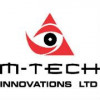
i
M Tech Innovations
Filter interviews by
Clear (1)
M Tech Innovations Quality Engineer Interview Questions and Answers
M Tech Innovations Quality Engineer Interview Experiences
1 interview found
I applied via Walk-in and was interviewed in Mar 2022. There were 2 interview rounds.

(1 Question)
- Q1. Tell me about yourself.
Interview Preparation Tips
I am form Nanded
Top trending discussions






Interview questions from similar companies

I applied via Naukri.com and was interviewed before Jul 2020. There was 1 interview round.
Interview Questionnaire
1 Question
- Q1. Coming to AEM,Interviewer has covered all the topics.
Interview Preparation Tips

Interview Questionnaire
1 Question
- Q1. What is name mangling?
- Ans.
Name mangling is a technique used by compilers to give unique names to functions and variables to avoid naming conflicts.
Name mangling is used in C++ to support function overloading.
It is also used in Python to avoid naming conflicts in modules.
Name mangling can make it difficult to access variables and functions from outside the class in which they are defined.
In C++, name mangling can be seen by using the 'nm' comman
Skills evaluated in this interview

I applied via Naukri.com and was interviewed in Aug 2020. There were 3 interview rounds.
Interview Questionnaire
1 Question
- Q1. Past experience and communication skills
Interview Preparation Tips

I applied via Naukri.com and was interviewed in Dec 2020. There was 1 interview round.
Interview Questionnaire
3 Questions
- Q1. About Quality
- Q2. What is the QMS
- Ans.
QMS stands for Quality Management System. It is a set of policies, processes, and procedures required for planning and execution of quality control.
QMS ensures that products or services meet customer requirements and comply with regulations
It includes quality planning, quality control, quality assurance, and quality improvement
ISO 9001 is a widely recognized QMS standard
QMS is important for industries such as healthcar
- Q3. How to reduce a rejections and reworks
- Ans.
To reduce rejections and reworks, implement a robust quality control system and focus on continuous improvement.
Implement a quality control system to catch defects early
Train employees on proper procedures and techniques
Conduct regular audits to identify areas for improvement
Analyze root causes of rejections and reworks to prevent future occurrences
Collaborate with suppliers to improve incoming materials quality
Utilize...
Interview Preparation Tips

Interview Questionnaire
2 Questions
- Q1. Engineering Technical
- Q2. Mainly on Engineering Design

Interview Questionnaire
6 Questions
- Q1. Explain abstract factory design pattern ?
- Ans.
Abstract Factory is a creational design pattern that provides an interface for creating families of related objects.
Abstract Factory is used when we need to create families of related objects without specifying their concrete classes.
It provides an interface for creating objects of related classes without specifying their concrete classes.
It encapsulates a group of factories that have a common theme.
It promotes loose c...
- Q2. How do you do range based map iteration
- Ans.
Range based map iteration can be done using a for-each loop or iterators.
Use a for-each loop to iterate over the map elements.
Alternatively, use iterators to traverse the map.
The range-based for loop is preferred for its simplicity and readability.
Example: for(auto const& [key, value] : myMap) { //do something with key and value }
- Q3. What are detached and joined threads
- Ans.
Detached threads are independent threads that run separately from the main thread. Joined threads are threads that wait for the main thread to finish.
Detached threads are created using pthread_detach() function
Joined threads are created using pthread_join() function
Detached threads do not need to be explicitly terminated
Joined threads must be explicitly terminated using pthread_exit() or return statement
Detached thread...
- Q4. What are static code analysis tools
- Ans.
Static code analysis tools are software programs that analyze source code to find potential issues and improve code quality.
Static code analysis tools scan code without executing it
They can detect issues such as security vulnerabilities, coding errors, and performance problems
Examples of static code analysis tools include SonarQube, ESLint, and Checkstyle
- Q5. Command to list currently running threads in linux
- Ans.
Command to list currently running threads in linux
Use the 'ps' command with the 'H' option to display threads in a hierarchy
Use the 'top' command to display threads in real-time
Use the 'htop' command for an interactive display of threads
- Q6. Can we perform arithmetic operation on Unique pointer
- Ans.
No, arithmetic operations cannot be performed on unique pointers.
Unique pointers are used to manage the lifetime of dynamically allocated objects.
They cannot be copied or assigned, only moved.
Arithmetic operations are not defined for pointers, including unique pointers.
Skills evaluated in this interview

Interview Questionnaire
1 Question
- Q1. Design facebook
- Ans.
Designing Facebook is a complex task involving various components and technologies.
Identify the core features of Facebook such as user profiles, news feed, messaging, and groups.
Choose appropriate technologies for each component such as PHP for backend, React for frontend, and MySQL for database.
Ensure scalability and performance by implementing caching, load balancing, and database sharding.
Implement security measures...
Interview Preparation Tips
Skills evaluated in this interview

I applied via Naukri.com and was interviewed in Nov 2020. There were 5 interview rounds.
Interview Questionnaire
2 Questions
- Q1. Questions based on the CV we kept
- Q2. Questions related to powershell, storages, networking in azure IaaS, NSG
Interview Preparation Tips

I applied via Recruitment Consultant and was interviewed in Mar 2021. There were 3 interview rounds.
Interview Questionnaire
1 Question
- Q1. Routing and switching related
Interview Preparation Tips
Its all about God's grace.
M Tech Innovations Interview FAQs
Recently Viewed
Tell us how to improve this page.
M Tech Innovations Interviews By Designations
- M Tech Innovations new Product Development Engineer Interview Questions
- M Tech Innovations Software Engineer Interview Questions
- M Tech Innovations Assistant Manager Interview Questions
- M Tech Innovations Quality Engineer Interview Questions
- M Tech Innovations Maintenance Engineer Interview Questions
- M Tech Innovations Marketing Executive Interview Questions
- M Tech Innovations System Administrator Interview Questions
- M Tech Innovations Quality Supervisor Interview Questions
- Show more
Interview Questions for Popular Designations
- Quality Inspector Interview Questions
- Senior Quality Engineer Interview Questions
- Quality Controller Interview Questions
- Quality Assurance Interview Questions
- Quality Manager Interview Questions
- Quality Executive Interview Questions
- Quality Assurance Officer Interview Questions
- Executive Quality Assurance Interview Questions
- Show more
Quality Engineer Interview Questions from Similar Companies
M Tech Innovations Quality Engineer Reviews and Ratings
based on 3 reviews
Rating in categories
|
System Administrator
19
salaries
| ₹0 L/yr - ₹0 L/yr |
|
Purchase Executive
16
salaries
| ₹0 L/yr - ₹0 L/yr |
|
Embedded Engineer
16
salaries
| ₹0 L/yr - ₹0 L/yr |
|
Production Supervisor
15
salaries
| ₹0 L/yr - ₹0 L/yr |
|
QA Engineer
14
salaries
| ₹0 L/yr - ₹0 L/yr |

TCS

Infosys

Wipro

HCLTech
- Home >
- Interviews >
- M Tech Innovations Interview Questions >
- M Tech Innovations Quality Engineer Interview Questions










